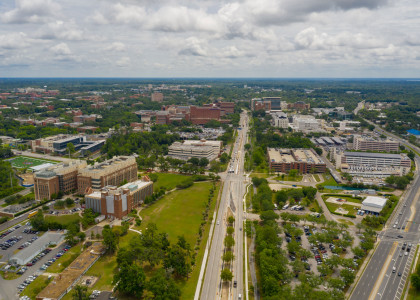Yes, natural gas utility energy efficiency programs still make sense. While much of the buzz in the utility industry the past few years has focused on electricity, the data show that gas efficiency still delivers dependable positive results. Although the low natural gas market prices of the past few years create challenges, our new report documents how utilities in leading states across the nation are continuing to provide cost-effective natural gas energy efficiency programs.
Gas utility energy efficiency programs have a long and productive history. In fact, the first utility energy efficiency programs in the nation were focused on natural gas, in response to the 1973 energy crisis. Since then, gas efficiency efforts have been heavily influenced by policymaker and regulator concerns about the impact of natural gas costs on customers. As natural gas wholesale market prices have declined considerably over the past decade, questions have arisen over the future of energy efficiency programs in the gas utility sector.
In response, ACEEE assessed the current state and future prospects of energy efficiency efforts by natural gas utilities in the United States. We reviewed pertinent literature, interviewed national experts, and surveyed regulators in 10 states that are leaders in utility natural gas savings. The results of our review provide encouraging news for the future of natural gas utility energy efficiency programs.
The results from several large-scale national studies that we cite in the report, conducted over the past decade, show that portfolios of natural gas energy efficiency programs have delivered savings at a levelized cost of $0.40 per therm or less. The picture appears promising looking ahead as well; we find that numerous natural gas energy efficiency potential studies project substantial future gas savings potential at $0.40 per therm or less. We identify eight such studies in the report, which examined states from multiple regions of the country.
We also show in the report how that “cost of saved energy” would be less than just the average wholesale commodity cost of natural gas delivered to utilities (i.e., the “Citygate” price) during most of the 21st century to date, and thus cost effective without needing to consider any of the additional benefits of those programs. While recognizing that record of success, we acknowledge that the recent environment of very low natural gas market prices presents challenges to the economic viability of energy efficiency programs.
The cost of natural gas supply is obviously a critical factor in assessing the cost effectiveness of gas efficiency programs. In that regard, our report discusses how some experts believe that the extremely low natural gas prices of recent years may not continue in the longer term. For that reason, we recommend that the risk of future gas-price increases be considered in any analysis of cost effectiveness. Nevertheless, in case the recent low gas prices do persist, it is prudent to develop policies and approaches that are sustainable under those market conditions.
Planning in a low natural gas price environment requires extra care in designing programs and developing the framework for assessing cost effectiveness. This report offers examples and recommendations that others have proposed toward those ends. Ideas for optimizing programs include partnerships and cost sharing with water and/or electric utilities, increasing incentives to participants when cost effective, and marketing and appropriately valuing non-energy benefits. With regard to assessing cost effectiveness, it is critical that an appropriate cost-effectiveness framework be established. We provide good examples from several states and recommend key features such as the following:
- Apply cost-effectiveness requirements at the portfolio level
- Use a low-risk or societal discount rate
- Appropriately value all system benefits and costs (e.g., include peak demand savings and avoided transportation and distribution costs)
- Provide for special treatment of low-income programs (e.g., exemption from passing the B/C test)
- Include appropriate non-energy benefits (e.g., water, comfort, safety, operations, maintenance savings)
- Appropriately value environmental impacts (including carbon dioxide)
- Incorporate some assessment of the risk of future natural gas price increases
States that have appropriately included these factors are finding that their natural gas utility energy efficiency programs are easily cost effective.
Some environmentalists have raised concerns that continuing gas efficiency programs could perpetuate the use of natural gas for heating and other end uses, whereas climate concerns suggest a need to ultimately end fossil fuel use and switch to electricity provided by renewable sources. We believe that for at least the near term, gas energy efficiency is still beneficial for both the economy and the environment, and we point to examples of states like Massachusetts and New York that are aggressively pursuing both natural gas energy efficiency and beneficial electrification. Going forward, building shell improvements in existing buildings will be particularly important to reduce costs and emissions, regardless of the fuel source.
In summary, as we approach another heating season, we find good reasons for states to continue to pursue natural gas energy efficiency programs. This year, it may be particularly important to target extra efforts toward populations hit hard by the COVID-19 recession.



